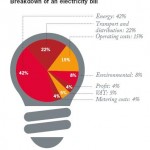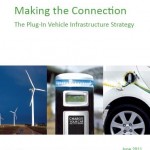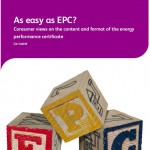Site search:
-
What’s new?
Energy for London Tags
Brent Buildings Camden Carbon Emissions CHP Cities Climate Adaptation Community Heating Community Initiatives Croydon Data DECC Decentralised Energy Distribution ECO Energy Costs Energy Efficiency Enfield FIT Fuel Poverty Funding Green Deal Hackney Haringey Housing Islington Lambeth Library Local Authorities Mayor Newham Ofgem Olympics Photovoltaics Planning RE:FIT RE:NEW Renewable Energy Retrofit Southwark Tower Hamlets Transport Waltham Forest Waste WestminsterEnergy Archives:
- February 2021 (1)
- January 2021 (15)
- December 2020 (15)
- November 2020 (9)
- October 2020 (3)
- August 2020 (5)
- July 2020 (3)
- June 2020 (4)
- April 2020 (10)
- March 2020 (5)
- February 2020 (2)
- January 2020 (3)
- October 2019 (1)
- September 2019 (4)
- August 2019 (2)
- July 2019 (1)
- August 2018 (1)
- November 2016 (8)
- October 2016 (8)
- September 2016 (2)
- August 2016 (8)
- July 2016 (14)
- April 2016 (12)
- March 2016 (16)
- February 2016 (8)
- January 2016 (4)
- December 2015 (1)
- November 2015 (1)
- October 2015 (16)
- September 2015 (3)
- June 2015 (1)
- May 2015 (1)
- April 2015 (1)
- March 2015 (1)
- February 2015 (1)
- January 2015 (1)
- December 2014 (18)
- November 2014 (4)
- August 2014 (8)
- July 2014 (7)
- June 2014 (25)
- May 2014 (8)
- April 2014 (4)
- March 2014 (12)
- February 2014 (7)
- January 2014 (13)
- December 2013 (11)
- November 2013 (15)
- October 2013 (15)
- September 2013 (18)
- August 2013 (5)
- July 2013 (20)
- June 2013 (33)
- May 2013 (8)
- April 2013 (16)
- March 2013 (25)
- February 2013 (14)
- January 2013 (20)
- December 2012 (23)
- November 2012 (23)
- October 2012 (25)
- September 2012 (14)
- July 2012 (12)
- June 2012 (43)
- May 2012 (20)
- April 2012 (8)
- March 2012 (40)
- February 2012 (39)
- January 2012 (40)
- December 2011 (22)
- November 2011 (40)
- October 2011 (33)
- September 2011 (48)
- August 2011 (40)
- July 2011 (58)
- June 2011 (41)
- May 2011 (80)
- April 2011 (38)
- March 2011 (33)
- February 2011 (25)
- January 2011 (24)
- December 2010 (3)
- November 2010 (7)
- October 2010 (6)
- September 2010 (7)
- August 2010 (1)
- July 2010 (2)
- June 2010 (4)
- May 2010 (1)
- March 2010 (3)
- February 2010 (3)
- December 2009 (5)
- November 2009 (2)
- October 2009 (3)
- July 2009 (3)
- June 2009 (1)
- April 2009 (1)
- March 2009 (1)
- February 2009 (1)
- January 2009 (1)
- December 2008 (2)
- October 2008 (1)
- September 2008 (1)
- July 2008 (1)
- March 2008 (2)
- January 2008 (2)
- October 2007 (1)
- September 2007 (3)
- July 2007 (1)
- March 2007 (1)
- February 2007 (3)
- November 2006 (3)
- August 2006 (1)
- February 2006 (1)
- May 2005 (1)
- February 2004 (1)
Library
Behaviour Change and Energy use
7 July 2011: The Cabinet Office’s Behavioural Insights Team published a report yesterday setting out how behavioural insights can be used to help people save energy and money. The report, Behaviour Change and Energy Use, launches a series of trials and “changes to government policy” (not sure what these are though…) which will make it easier for individuals to green their homes and use less energy. Several of these trials are based in London including:
- How social networks might be harnessed to support the uptake of domestic energy efficiency measures. In partnership with B&Q and Kingston and Merton councils – a trial will run to test the impact of offering energy efficiency products and services at varying levels of discount depending on how many people opt in to the offer. In this trial, homeowners in Merton will be offered a discount on B&Q energy-efficient products such as loft and cavity wall insulation. People will be incentivised to encourage others in their local community to take up the offer with them –discounts for each household range from 10% fortwo households, to 15% for three households and25% for five households.Merton Council will highlight this through community engagement, also raising awareness about the discounted energy-efficient products by marketing the deal in their own local publications. The trial will be conducted between September and December 2011. To determine the effectiveness of this intervention, Kingston Council will act as a control where householders will be offered standard, non-discounted green products.
- Testing the impact of helping to remove the ‘hassle factor’, specifically investigating whether minimising the hassle associated with loft clearance will encourage the uptake of loft insulation. B&Q and the London Borough of Sutton are currently discussing the terms of a trial which will test the effectiveness of offering a subsidised loft-clearing service in conjunction with loft insulation.
Whitehall Exceeds Carbon Target
7 July 2011: The Prime Minister announced yesterday that carbon emissions from central Government HQs and offices – the majority vast of which are based in London – have been slashed by nearly 14% in just one year, and told Whitehall it would have to go further by cutting emissions by 25% by 2015. Lots of Departmental performance information released, but of more interest is the end of year report – Carbon Reduction on the Government Office Estate – which makes interesting reading in relation to the projects implemented in offices to help reduce energy/carbon. These include energy saving competitions, implementing a 19°C set point, various energy conservation projects, introducing Automatic Meter Reading, and an also a successful CHP project at the DWP. DECC’s behaviour change experiments are a good read: ‘scrunch‘ – which gives people who are working late incentives to congregate in one area, thereby allowing whole floors to be shut down; and ‘OK Commuter’, which helps people track their journeys to work. (‘no surprises’ that DECC’s full of Radiohead fans!)
Underground technology could heat thousands of UK homes
July 2011: The Environment Agency have produced a good practice guide and position statement for ground source heating and cooling schemes. Environment Agency research indicates that there are around 12,000 ground source heat and cooling systems in the UK and that this figure could increase to more than 300,000 systems by 2020..
There are many challenges to the wide-spread use of GHSP in domestic sites in London, however, there are some excellent examples of commercial scale schemes operating in London, as the EA points out. These include the Sainsbury’s Crayford store in Bexley, and also the One New Change development in the City, which operates the largest GSHP installation in Europe (Land Securities press release from January 2011 at the opening of the development, providing details of the system).
Posted in Library, News, Renewable Energy
Tagged Environment Agency, GSHP, Renewable Energy
Leave a comment
Microgeneration Case Studies
July 2011: DECC has published a series of microgeneration case studies on their website, providing some useful project and cost information on a number of renewable technologies (both heat and power types). None of the projects are in London from what I can see – which is a shame – but useful nonetheless.
Energy Efficiency Findings from the English Housing Survey 2009
5 July 2011: The detail behind the 2009 English House Condition Survey Headline Report published by CLG in February 2011, has today been set out in the English Housing Survey: Housing Stock Report 2009, which involved surveying 17,042 households between April 2009 and March 2010.
Chapter 6 of the report assesses the energy performance of the housing stock in terms of its energy efficiency and CO2 and sets out some interesting findings including that:
- The energy efficiency (SAP) rating for the housing stock is 53 points in 2009.
- Some 15% of all dwellings were in the lowest Energy Performance Certificate Energy Efficiency Rating Bands F and G (SAP less than 39).However, whilst 19% of private rented and 16% of owner occupieddwellings were in Bands F or G, only 6% of all social rented dwellingswere similarly banded.
- By 2009, half of all dwellings with cavity walls had cavity wall insulation. Solid wall insulation was far less common: only 2% of dwellings with non-cavity walls had external insulation, and almosthalf of these were in the social rented sector.
- Only 41% of dwellings with lofts had at least 150mm of loft insulation in 2009,
- In 2009, around a quarter (24%) of all dwellings had either acondensing or condensing combination boiler compared to only 2% in2003. Some 29% of all boilers were less than three years old although the same proportion of boilers were at least 12 years old.
- Some 2% of dwellings had some form of solar panel system (either photovoltaic panels for micro generation of electricity or solar water heating panels) in 2009.
Chapter 7 goes on to consider the ‘energy improvement potential‘ and concludes:
- In total 19.3 million dwellings (86% of the housing stock) could benefit from at least one of the cost effective improvements recommended through the Energy Performance Certificate (EPC).
- The measure that could benefit the largest number of dwellings was replacing the existing conventional central heating boiler with a condensing unit (13.4 million).
- Generally, private rented dwellings were the most likely to be able to benefit from lower cost improvement measures. The oldest stock was not necessarily the most likely to benefit from cost effective measures because many of these older dwellings have been improved over the years.
- The average cost of carrying out cost effective improvements would be around £1,400 per improved dwelling.
- If all cost effective improvement measures were installed, the mean energy efficiency (SAP) rating for the stock as a whole would rise by10 points to 63.
- On the basis of this energy efficiency rating methodology, the improvement would equate to a potential 22% reduction in heating,lighting and ventilation costs of average fuel bills for households (at constant prices), CO2 emissions falling on average by 1.4 tonnes/year across the whole stock and a total saving of 32 million tonnes/year of CO2 (or 24% of total emissions accounted for by the housing stock).
- If all cost effective improvement measures were installed, the percentage of dwellings in EPC Energy Efficiency Rating Bands A to C would more than double to almost 40% of the housing stock and the percentage in the least efficient Bands E to G would fall by more than half to 18%.
Unfortunately no breakdown for London or any other regions where these surveys were undertaken is provided. However, a lot of interesting stuff to get through here- and much more in the chapters. The fact that replacing older boilers with newer condensing models was identified as the “measure that could benefit the largest number of dwellings” it seems a bit of an oversight of Government not to have any programme in place (now that the Boiler Scrappage Scheme has now stopped (at least in England) and that the Warm Front programme is soon to be wound up) to accelerate the take up of higher efficiency boilers. Additionally, the Green Deal, starting in October 2012, does not include boiler replacement within the measures it will cover.
A breakdown of the statistics behind the report are presented in the English Housing Survey Housing Stock Summary Statistics Report 2009 and a summary of the findings are set out in English Housing Survey Bulletin: Issue 4, both of which were also published today.
Posted in Data Store, Energy Efficiency, Library, News
Tagged CLG, Energy Efficiency, Housing, SAP
Leave a comment
(Green) Deal or No Deal?
5 July 2011: Following a roundtable discussion which took place early in June involving a number of stakeholders including DECC, Future of London have produced a policy paper considering the Green Deal and issues that need to be resolved to ensure its successful introduction in London.
Explaining Energy Costs
 June 2011: Industry trade association, Energy UK, two-page factsheet providing a brief explanation of the elements that go up to make up electricity and gas unit prices.
June 2011: Industry trade association, Energy UK, two-page factsheet providing a brief explanation of the elements that go up to make up electricity and gas unit prices.
Electric Vehicles – Making the Connection
 30 June 2011: The Department for Transport launched its Electric Vehicle Infrastructure Strategy today stating its vision on charging that”We want to see the majority of recharging taking place at home, at night, after the peak in electricity demand. Home recharging should be supported by workplace recharging for commuters and fleets, with a targeted amount of public infrastructure where it will be most used, allowing people to make the journeys they want” and that “... an extensive public recharging infrastructure would be underutilised and uneconomic. We want public infrastructureto be targeted at key destinations, where consumers need it, such as supermarkets, retail centres and car parks, with a focused amount of on-street infrastructure, particularly for residents without off-street parking.” One of the eight Plugged in Places projects currently going ahead around the country piloting the roll-out of recharging infrastructure, is in London – further information on which is at sourcelondon.net
30 June 2011: The Department for Transport launched its Electric Vehicle Infrastructure Strategy today stating its vision on charging that”We want to see the majority of recharging taking place at home, at night, after the peak in electricity demand. Home recharging should be supported by workplace recharging for commuters and fleets, with a targeted amount of public infrastructure where it will be most used, allowing people to make the journeys they want” and that “... an extensive public recharging infrastructure would be underutilised and uneconomic. We want public infrastructureto be targeted at key destinations, where consumers need it, such as supermarkets, retail centres and car parks, with a focused amount of on-street infrastructure, particularly for residents without off-street parking.” One of the eight Plugged in Places projects currently going ahead around the country piloting the roll-out of recharging infrastructure, is in London – further information on which is at sourcelondon.net
Energy Performance Certificates should make it clear that energy efficiency pays
 30 June 2011: Consumer Focus research found that consumers pay little attention to the EPCs when they move house. It found that EPCs give consumers no real sense of how the ratings translate into financial benefits or how to compare running costs between properties. Consumers are put off by technical language, would prefer more concise information and are confused by two separate ratings on the property for energy efficiency and environmental impact.
30 June 2011: Consumer Focus research found that consumers pay little attention to the EPCs when they move house. It found that EPCs give consumers no real sense of how the ratings translate into financial benefits or how to compare running costs between properties. Consumers are put off by technical language, would prefer more concise information and are confused by two separate ratings on the property for energy efficiency and environmental impact.
National Renewable Energy Statistics
30 June 2011: Short article in latest issue of DECC’s Energy Trends quarterly journal, published today, providing the latest national renewable energy statistics for the UK. The analysis finds that “Renewable energy provisionally accounted for 3.3 per cent of energy consumption, as measured using the 2009 Renewable Energy Directive methodology. This is an increase of 0.3 percentage points from the 2009 position of 3.0 per cent.” The UK’s 2020 target is for 15 per cent of UK energy needs to be supplied from renewable energy sources.
Energy Demand Research Project – Community Trials
June 2011: Final analysis of Ofgem/DECC major Energy Demand Research Project (EDRP) has just been published. EDRP was a behaviour change trial designed to help better understand how domestic consumers react to improved information about their energy consumption over the long term. The project involved over 60,000 households, including 18,000 with smart meters. Measures were generally applied at household level but one supplier (SSE) also tested action at community level (none of which were unfortunately in London – the results of these community trials are detailed in Appendix D of the report).
The results are too detailed to summarise here- but the 10 page Exec summary makes interesting reading.
Energy Efficiency PAYS Trial Update
June 2011: Gentoo has published a report which outlines early findings from the Pay As You Save (PAYS) trials. The DECC sponsored pilot currently incorporates 117 properties where energy efficiency improvements including condensing combi boilers, double glazing and solar PV panels have been installed with no upfront costs to the customer. The costs of these improvements are being recovered through a weekly PAYS charge to the customer.
Gentoo has used experience from its previous energy efficiency Retrofit Reality project to ensure that customers are not charged more than they will save.

